Everyday Moments to Sketch
- A Shady Spot in the Park: Find a bench under a tree or a secluded corner where you can observe the world without interruption. Sketch people jogging, pets playing, or the peaceful swaying of the leaves.
- Hidden Coffee Shop Nooks: Look for cafes with cozy, tucked-away seating where you can sketch cups, saucers, or the quiet ambiance of the space.
- Library Alcoves: Libraries often have serene corners with minimal noise, perfect for sketching books, architectural features, or people lost in their reading.
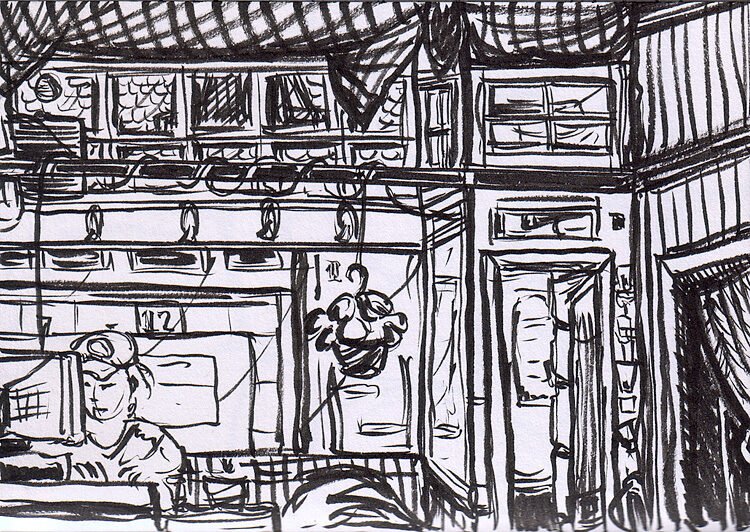
credit: JASONPOGO
Seasonal Escapes for Focused Sketching
Nature’s changing seasons offer unique inspiration for artists, each bringing its own palette, textures, and atmosphere to your sketchbook. By immersing yourself in these seasonal settings, you can enhance your artistic practice while soaking in the beauty of the world around you.
Springtime Gardens: A Symphony of Renewal
Spring is a time of rebirth and vitality, making it an ideal season to breathe fresh life into your sketchbook. Seek out a tranquil corner of a botanical garden where vibrant blooms, budding trees, and soft breezes surround you.
- Floral Focus: Use the plethora of flowers—like tulips, cherry blossoms, and daffodils—as subjects. Focus on their intricate petals, radiant colors, and delicate gradients. Capture the interplay of light as it filters through freshly unfurling leaves.
- Texture Exploration: Study the juxtaposition of soft blossoms against rough bark or sturdy stems. Experiment with layering techniques to represent these textural contrasts in your sketches.
- Dynamic Compositions: Many gardens feature fountains, winding paths, or even playful wildlife. Incorporate these elements to add movement and depth to your work.
- Mood and Light: Mornings in spring often feature dewy freshness and diffused lighting, while late afternoons offer warmer tones as the golden hour approaches. These varying conditions create excellent opportunities to study color and mood.
Bring along some soft pastels, colored pencils, or watercolors to fully embrace the soft, delicate energy of spring.
Snowy Winter Viewpoints: A Quiet Study in Contrast
Winter may seem an unlikely time to immerse yourself in sketching, but its stark and serene landscapes offer unparalleled opportunities to study light, form, and simplicity. Settle into a cozy indoor spot, such as a window seat in a lodge, a café with large windows, or even your own home, overlooking a snow-covered scene.
- Monochromatic Challenges: Use the muted tones of winter—such as whites, grays, and blues—as a way to refine your value studies. Focus on subtle variations in shadow and light that appear on snow-laden surfaces.
- Textures in the Landscape: Capture the fine details of frost on windowpanes, the crystalline sparkle of fresh snow, or the jagged edges of bare tree branches. This is an excellent time to experiment with hatching and stippling techniques to represent texture.
- Indoor Charm: If you’re sketching indoors, include cozy elements in your work. A steaming cup of tea, a roaring fireplace, or a woolen blanket draped over a chair can add warmth and life to your winter scenes.
- Wildlife in Winter: Look for birds and animals that adapt to winter conditions, like cardinals, sparrows, or even deer crossing snowy fields. Their movements and presence can bring dynamism to your sketches.
Dress warmly if you venture outdoors and consider using ink pens or charcoal for bold contrasts against the subdued tones of winter landscapes.
Autumn Trails: A Kaleidoscope of Colors
Autumn brings a richness of hues and a crispness in the air that invigorates the creative spirit. Wander along an isolated trail strewn with fallen leaves, and let the vibrant reds, oranges, and yellows of the season infuse your sketchbook with warmth.
- Vivid Color Palettes: Focus on the dynamic, fiery tones of autumn foliage. Experiment with color blending using markers, colored pencils, or watercolors to represent the gradient from green to gold.
- Fallen Leaves and Patterns: Study individual leaves and their unique shapes, veins, and textures. Sketch piles of leaves, emphasizing their overlapping layers and interplay of light and shadow.
- Tree Studies: Autumn is the perfect time to sketch trees in transition, capturing the structure of bare branches juxtaposed against those still cloaked in vibrant foliage.
- Trail Scenes: Illustrate the winding paths bordered by trees and hedges, using perspective to create a sense of depth. Include elements like benches, fences, or streams to enhance the composition.
- Atmospheric Elements: Use the soft, golden light of autumn afternoons or the moody tones of overcast skies to experiment with atmospheric effects in your sketches.
Don’t forget to pack warm tones like sienna, ochre, and crimson for capturing the essence of this transformative season.
Travel and Transportation (with Quiet Spots in Mind)
- Train Station Corners: Locate a quiet seat or bench with a view of the arriving and departing trains. Capture the motion of travelers in your sketches.
- Airport Lounges: In between flights, find a comfortable space near a window to sketch planes taking off or passengers absorbed in their journeys.
- Riverside Walkways: Sit on a quiet bench along a riverbank and sketch the reflections on the water, passing boats, or the skyline.
Unique Themes for Undisturbed Sketching
- Quiet Markets: Visit local markets during off-peak hours to sketch colorful displays of fruits, vegetables, and artisanal goods.
- Nature Reserves: Select a tranquil spot near a trail or pond to sketch wildlife, plants, or the serenity of the environment.
- Historic Sites and Museums: Many museums and historical locations offer calm spaces where you can sit and draw architectural details, sculptures, or still-life compositions.
Tips for Finding Your Ideal Sketching Spot: Perfect Places for Creative Focus
Choosing the right spot for sketching can transform your artistic experience, helping you focus, find inspiration, and immerse yourself fully in the moment. Whether you prefer quiet natural landscapes or bustling urban corners, taking the time to plan and prepare for your ideal sketching location ensures that you’ll be comfortable, undisturbed, and ready to create. Here’s an expanded guide to help you find the perfect place to sketch and make your creativity flourish.
Scout Ahead: Explore Locations in Advance
Before heading out with your sketchbook, take some time to explore potential sketching spots.
- Research Nearby Options: Use online maps or local guides to discover hidden gems, such as scenic trails, community parks, or cozy café patios.
- Visit in Person: Walk around the area beforehand to evaluate the ambiance. Pay attention to how noisy or crowded the location is during different times of the day.
- Note Points of Interest: Look for elements that could inspire your sketches, such as unique architecture, natural features, or interesting people.
- Weather Considerations: Check the weather forecast for your selected spot to ensure it aligns with your comfort and sketching needs.
Scouting ahead can save you time and frustration while ensuring that your sketching session is productive and enjoyable.
Choose Early or Late Hours for Peace
Timing is everything when it comes to finding a quiet, uninterrupted space for sketching.
- Early Morning: Head out during sunrise for serene and calming surroundings. The soft morning light offers excellent conditions for sketching nature or architectural details.
- Late Afternoon or Evening: Enjoy the tranquil atmosphere of golden hour or twilight as bustling activity begins to wind down.
- Avoid Peak Times: Skip crowded midday hours at parks, cafés, or public areas to minimize distractions and noise.
Choosing quieter hours not only ensures focus but also allows you to capture unique lighting conditions and moments that are often missed during busier times.
Look for “Do Not Disturb” Spots
Finding secluded areas where you can work in peace is essential for uninterrupted sketching sessions.
- Libraries and Reading Corners: Libraries are fantastic for focused sketching due to their quiet atmosphere. Look for cozy nooks or reading areas with good natural or artificial light.
- Hidden Benches: Seek out benches tucked away in secluded corners of parks or along trails. These areas often provide uninterrupted views and a sense of calm.
- Corners in Urban Spaces: In cities, small alcoves, side streets, or tucked-away patios can be perfect spots to sketch while soaking in urban energy without the chaos of foot traffic.
“Do Not Disturb” spots are where creativity thrives without interruption, making it easier to concentrate on your art.
Bring Comfort: Take Care of Your Needs
Your physical comfort is just as important as the environment you choose. Packing a few key items ensures that your sketching session isn’t cut short by discomfort.
- Portable Seating: A small foldable stool or cushion allows you to sit anywhere, even if your chosen spot lacks proper seating.
- Lightweight Gear: Carrying a compact sketchbook, pencils, and erasers keeps your load manageable, especially during longer outings.
- Weather Protection: Bring items like sunscreen, a hat, or a light jacket to adapt to shifting conditions.
- Snacks and Drinks: Stay hydrated and energized with a water bottle and a light snack to keep your focus sharp.
Comfort enhances your ability to concentrate and immerse yourself in the creative process, making your session more enjoyable.
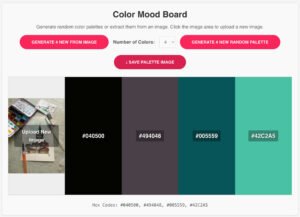
Sketchbooks.org | ART REPORTING | NEWS
The Color Palette Generator
Generate Mood Boards Here! Unleash your creativity with our Color Palette Generator —a mobile-friendly companion for artists, designers, and visual thinkers. Whether you're capturing inspiration from a forest walk, the textures of your sketchbook, or...
Expand Your Search for Sketching Spots
Take your creativity to new heights by exploring different types of locations for sketching.
- Nature Reserves: Escape to quiet woodlands, trails, or nature reserves where wildlife and landscapes provide endless inspiration.
- Community Gardens: Soak in vibrant colors and textures in a shared garden space, perfect for both solitude and casual interaction with fellow visitors.
- Bustling Cafés: If you prefer urban energy, find an outdoor table or a corner seat in a café to sketch the lively comings and goings of people.
- Historical Sites: From monuments to museums, historical sites offer rich settings for architecture-focused sketches.
- Local Events: Check out farmers’ markets, street festivals, or pop-up events. These places often feature unique people and activities that make for dynamic sketching opportunities.
Diversifying your sketching locations keeps your creative practice fresh and exciting.
Why Your Spot Matters
A secluded and inspiring sketching spot can make all the difference between a rushed doodle and an immersive creative session.
- Engage with the Environment: The right spot allows you to absorb the details of your surroundings, inspiring thoughtful and detailed sketches.
- Achieve Focus and Flow: Minimal distractions make it easier to concentrate, so you can fully embrace the sketching process.
- Find New Perspectives: Exploring different spots can lead to fresh ideas and creative breakthroughs that might not happen in familiar settings.
Whether it’s the quiet calm of a hidden bench or the subtle hum of a tucked-away café corner, selecting the right location adds richness to your artistic experience.
Final Thoughts
Finding your ideal sketching spot is not just about location—it’s about creating the conditions for inspiration and focus. Take the time to scout areas, experiment with different times of day, and pack essential comforts to ensure your creative flow isn’t disrupted. From nature’s serene escapes to urban hideaways, every spot has the potential to fuel your creativity and transform your sketchbook.
Call to Action
Grab your sketchbook, head to an inspiring location, and let your surroundings guide your art. You might be surprised by what you create!
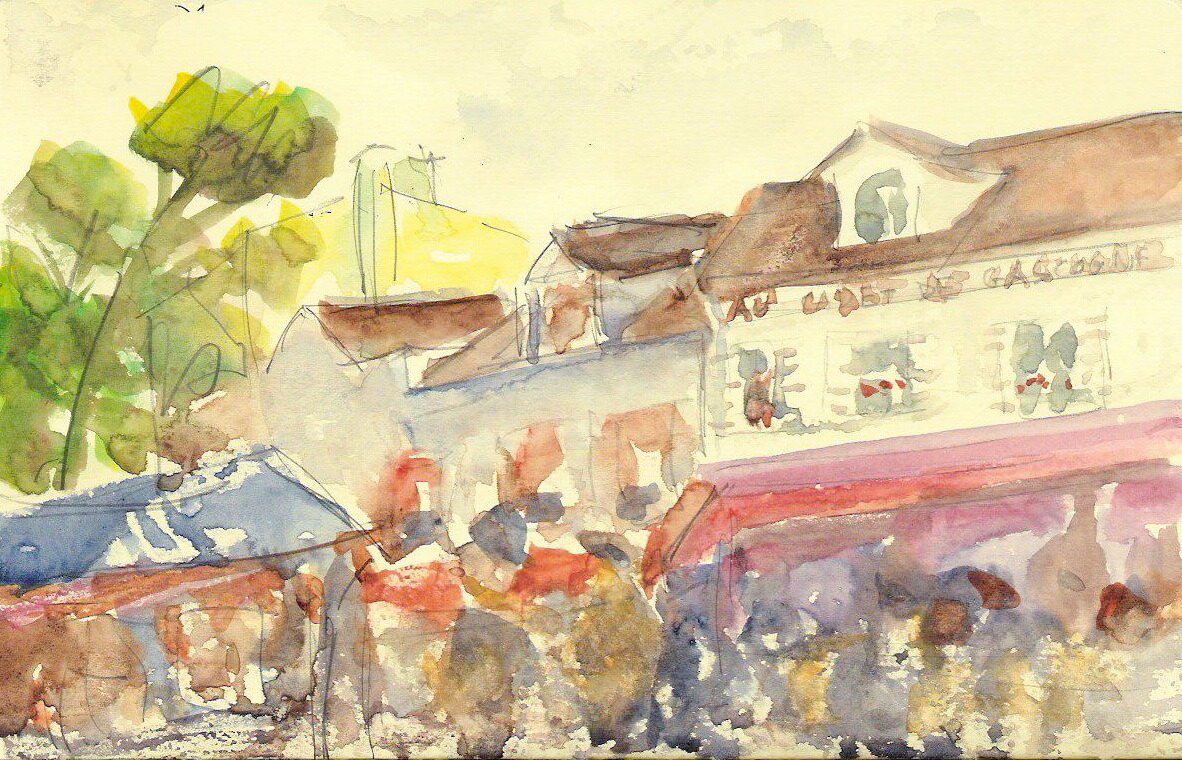
credit: SANTIAGORIOS
Ready to Share Your Work?
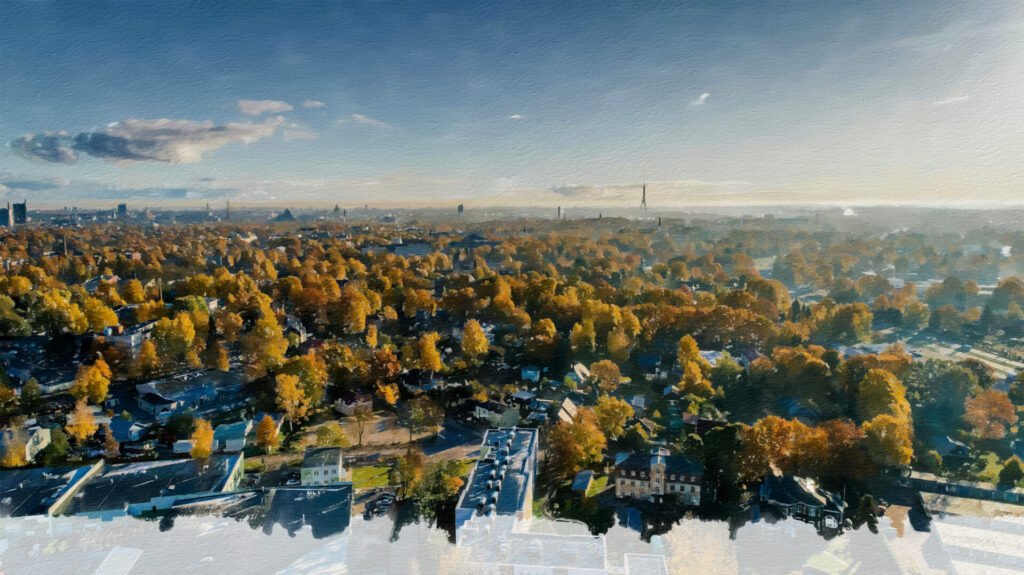
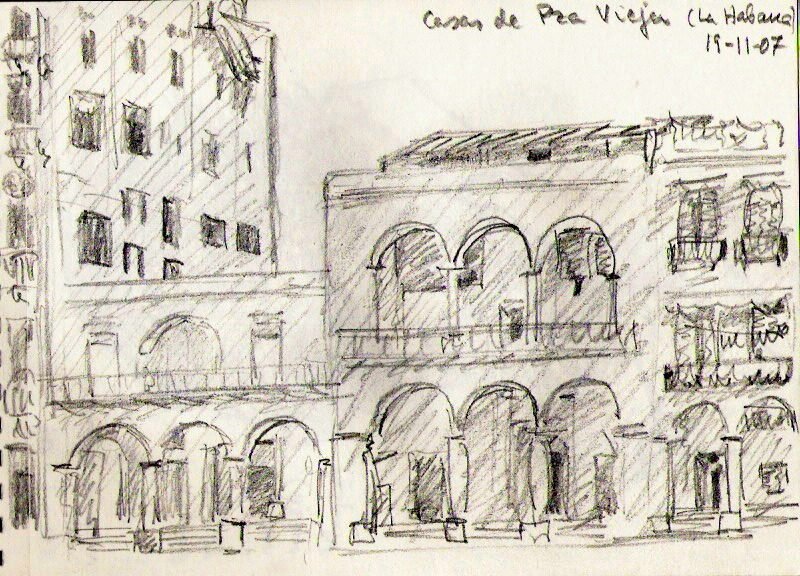
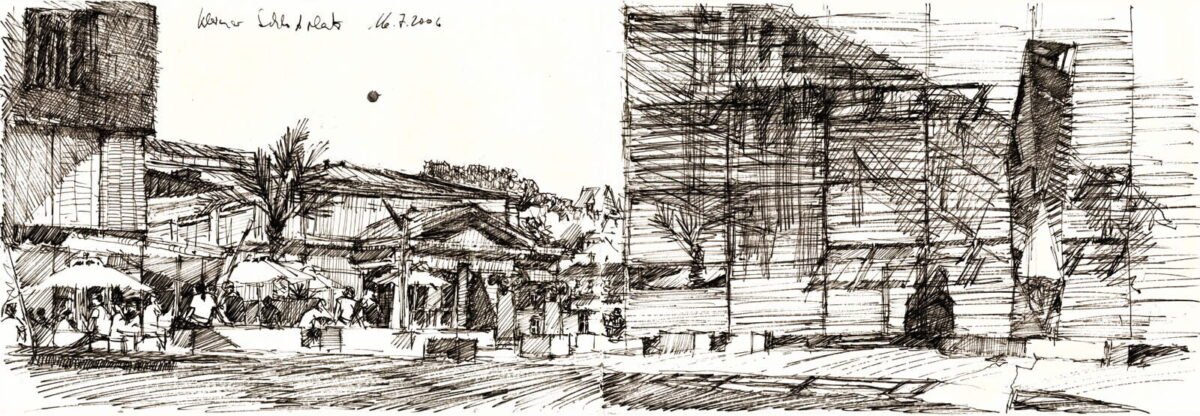


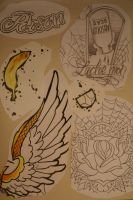
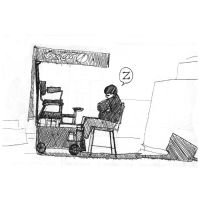



This has become my favourite part of the day. My 1 hour sketch spot.